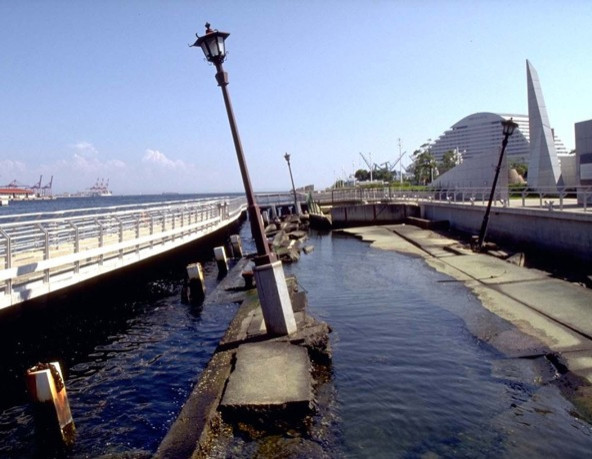Top 5 Most Economically Damaging Natural Disasters in History

As Hurricane Irene barrels its way up the eastern coast of the U.S., forecasters are predicting not only brutal gale-force winds, torrential rains and massive flooding of low-lying areas, but also multibillion dollars in economic damages.
While it's impossible to accurately gauge the financial impact of an impending natural disaster, Irene would truly have to be a catastrophic event to fall into the following list of the costliest natural disasters in recorded history.
5. Great Sichuan Earthquake (China)
The 8.0-magnitude earthquake that struck Sichuan in southwest China in May 2008 took with it 70,000 lives, with at least 18,000 people still missing; and more than 370,000 injured.
The earthquake is estimated to have left at least five million people homeless. Millions of animals in the agricultural province were also killed.
The epicenter of the quake was 50 miles west-northwest of Chengdu, a city of more than four million people.
The tremors were felt more than 1,100 miles away in Beijing.
The World Bank estimates the disaster caused $29 billion in direct damages.
4. Northridge Earthquake (U.S.)
The 6.7-magnitude earthquake created widespread damage in the densely populated city of Los Angeles and San Fernando Valley when it struck on January 1994.
The quake killed 60 people, injured more than 8,700 and left more than 25,000 people homeless, according to the Federal Emergency Management Agency.
Due to its location, the quake suspended production of various TV and movie projects.
Interestingly, several insurance companies either stopped providing or drastically reduced earthquake-related policies in California thereafter.
Estimates of the economic damages left in its wake range from $25 billion up to $42 billion.
3. Hurricane Katrina (U.S.)
The hurricane that smashed into New Orleans and surrounding area has become immortalized in book, TV and movies. The storm (and the subsequent flooding of New Orleans) killed at least 1,800 people, made tens of thousands homeless, and raised the ire of a public who were outraged by the slow response of both state and federal officials to the crisis.
Financial damage from the chaos is estimated at $81 billion. In addition, the Insurance Information Institute said Katrina resulted in a payout of $41 billion, making it the big insurance loss ever.
However, these figures likely don't account for the loss of oil production from the nearby Gulf of Mexico through the destruction of refineries and oil platforms.
In addition, the storm permanently wiped out hundreds of thousands of jobs in the fishing, forestry and other industries throughout the Gulf.
Some estimates place the total economic impact of the storm on Louisiana and Mississippi as high as $150 billion.
2. Great Hanshin Earthquake (Japan)
Also known as the ‘Kobe Earthquake,’ the 6.8-magnitude seismic event struck the southern region of the Hyogo Prefecture in January 1995 and killed about 6,500 people, mostly in the port city of Kobe.
About 200,000 buildings collapsed in the area, while up to 1,590 quays in Kobe were destroyed.
The World Bank estimated that the disaster caused economic losses totaling $100 billion (or about 2.5 percent of Japan’s GDP at the time).
Losses were characterized by the fact that 97 percent of property in Kobe wasn't insured.
1. Earthquake/Tsunami/Nuclear Crisis (Japan)
The ongoing tragedy arising from the earthquake and tsunami in northeast Japan in March 2011 not only killed almost 9,000 people and left more than 13,000 missing, but also it created an unprecedented radiation emergency when the plants at Fukushima-Daichi were damaged.
More than 200,000 people had to be evacuated from the vicinity of the plants.
The enormous costs of this double-tragedy, currently estimated at about $235 billion by the World Bank, is surely to keep rising, The Japanese government’s own estimate for financial losses already exceed $300 buillion.
© Copyright IBTimes 2024. All rights reserved.





















